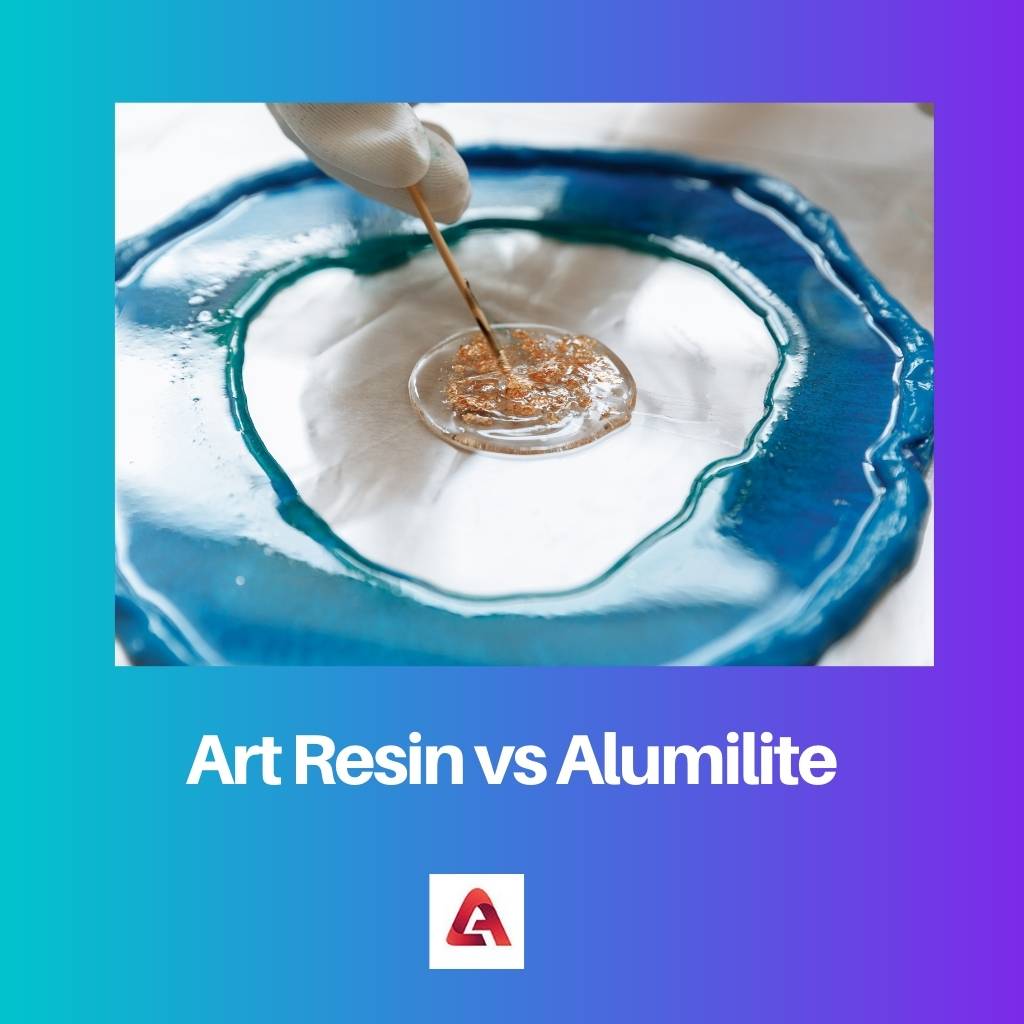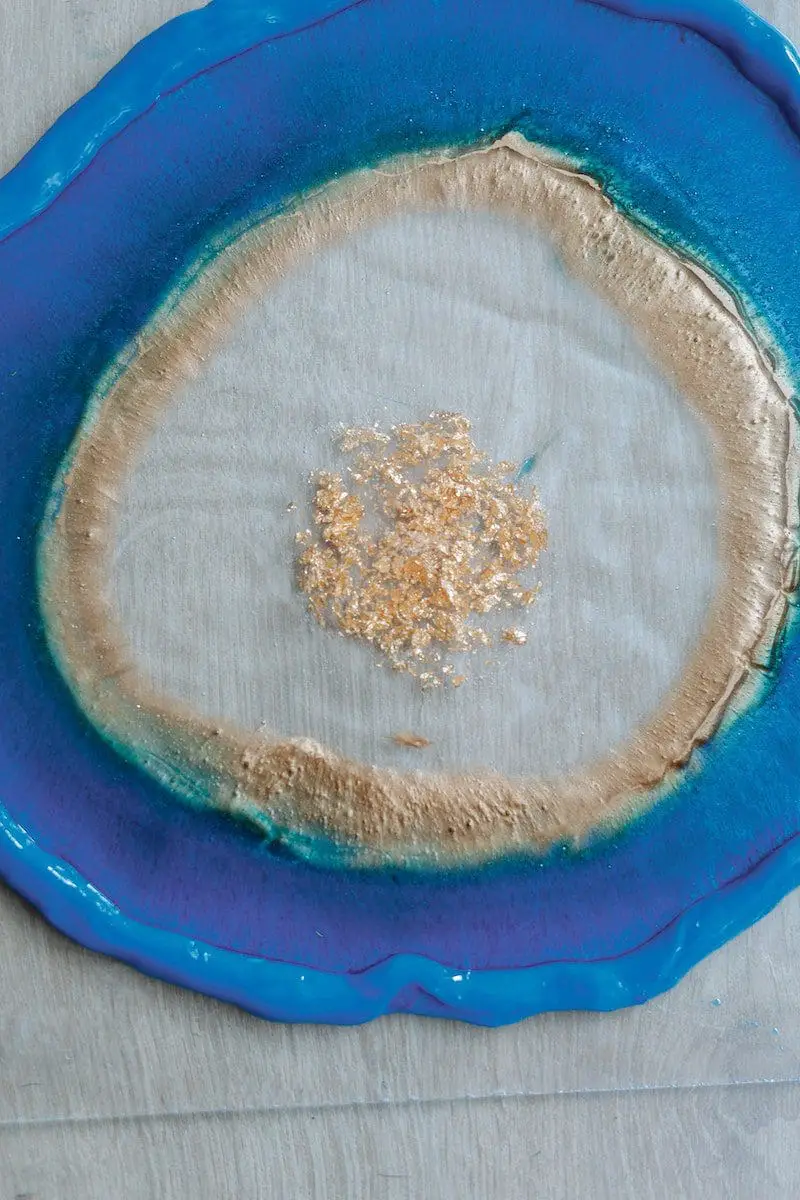Resin is a very popular and established way to preserve and fix things. The use of a particular resin depends on one’s need.
Key Takeaways
- Art resin is a two-part epoxy resin, while Alumilite is a two-part liquid plastic casting resin.
- Art resin has a longer working time and is more UV resistant than Alumilite.
- Alumilite is more impact-resistant and cures faster than Art resin.
Art Resin vs Alumilite
Art Resin is an epoxy resin used as a sealant for arts and crafts to preserve and give them a glass-like durable finish. It is not toxic or harmful. Alumilite is a rigid, clear-casting resin that is commonly used for larger-scale works because it can be risky and detrimental if not used properly.

Art resin is a product for art and craft. It is easy to use resin, and it gives a glossy finish to the artwork. Any kind of craft can be decorated and preserved with the use of art resin.
Alumilite is a raw kind of resin that is used for casting and other large works. It can be toxic and harmful if not used following the instructions.
Comparison Table
| Parameters of Comparison | Art Resin | Alumilite |
|---|---|---|
| Definition | Art resin is a mild resin that is used for art and craft endeavours. | Alumilite is a harsh and raw kind of resin that is used to fix unwanted voids and holes. |
| Use | It is used for creative works. | It is used for casting. |
| Toxicity | It is not toxic or harmful. | It is toxic and can be harmful. |
| Industry | It is used in creative industries. | It is used in not so delicate industries. It is used to fix hefty things. |
| Access | It can be accessed and used without any hindrance. | It is not easy to access and use, people mostly take help from professionals. |
What is Art Resin?
Art resin is a resin that is easy to use in various art and craftworks. Anyone can use art resins without any risk and give their art and craft a glossy, fresh look while preserving them at the same time.
Art resins have UV stabilizers and also amine light stabilizers. This prevents them from getting yellow with time. It stays clear in the bottle and also after being used.
Art resin should be used on wooden panels, especially for large workpieces, rather than on a canvas. Otherwise, the work can get sagged with the weight of the resin.

What is Alumilite?
Alumilite is a kind of resin with 2 part urethane, it is a premium quality silicone mold or resin, and it is mostly used for casting.
To use Alumilite without any hazards, one needs to be very careful about the measures. A scale should be used while mixing. The ratio is supposed to be 1:1 by weight and not by volume.
Alumilite comes in three different kinds. Alumilite Clear is preferably used for casting pen blanks and knife blocks. The casting with this is optically clear.

Main Differences Between Art Resin and Alumilite
- It is used in creative industries, but Alumilite is not for delicate works creative works.
- Art resin is user-friendly and easily available while using Alumilite can be complicated.

- https://books.google.com/books?hl=en&lr=&id=styvK3NYmRQC&oi=fnd&pg=PA8&dq=art+Resin+and+Alumilite&ots=m-DpBlKe6i&sig=VGDspCCYh3TaZF9XKPNmdEgS9Nk
- https://www.sciencedirect.com/science/article/pii/S0959652619309795

I’ve been looking for information about Art Resin and Alumilite, this article has given me a lot of information that I needed.
I agree, it’s full of useful information.
The article effectively highlights the features of Art Resin and Alumilite. Very informative.
Yes, it’s a great and insightful article.
This is a very helpful article about resin and the difference between Art Resin and Alumilite, I will definitely be using the information from this article on my next projects.
Yes, it is a very informative and interesting article.
Absolutely, the comparison table is very useful.
Thank you for sharing this detailed and informative article. I now know the key differences between Art Resin and Alumilite.
I’ve learned a lot from this article too.
I’m glad to have found this article, it’s very helpful.
The article clearly explains the differences between Art Resin and Alumilite. Very well written.
That’s true, and the detailed descriptions are very informative.
Yes, the comparison table is very helpful.
This article has provided all the necessary information about Art Resin and Alumilite.
I couldn’t agree more.
I’ve gained a lot of knowledge about resin from this article. It’s very insightful and well-written.
Absolutely, this article has provided a lot of useful information.
I’m glad to have found this article. It’s very informative.
This article is very informative and well-structured. The comparison table is very useful.
I agree, the comparison table makes it easy to understand the differences.
Definitely, this article has provided a lot of useful information.
The detailed analysis of Art Resin and Alumilite has given me a lot of insight.
I’m glad I found this article too. It’s very informative.
I’ve learned a lot from this article.
The comparison table and detailed descriptions have made it easy to understand the differences between the two types of resin.
Indeed, it’s a great article.